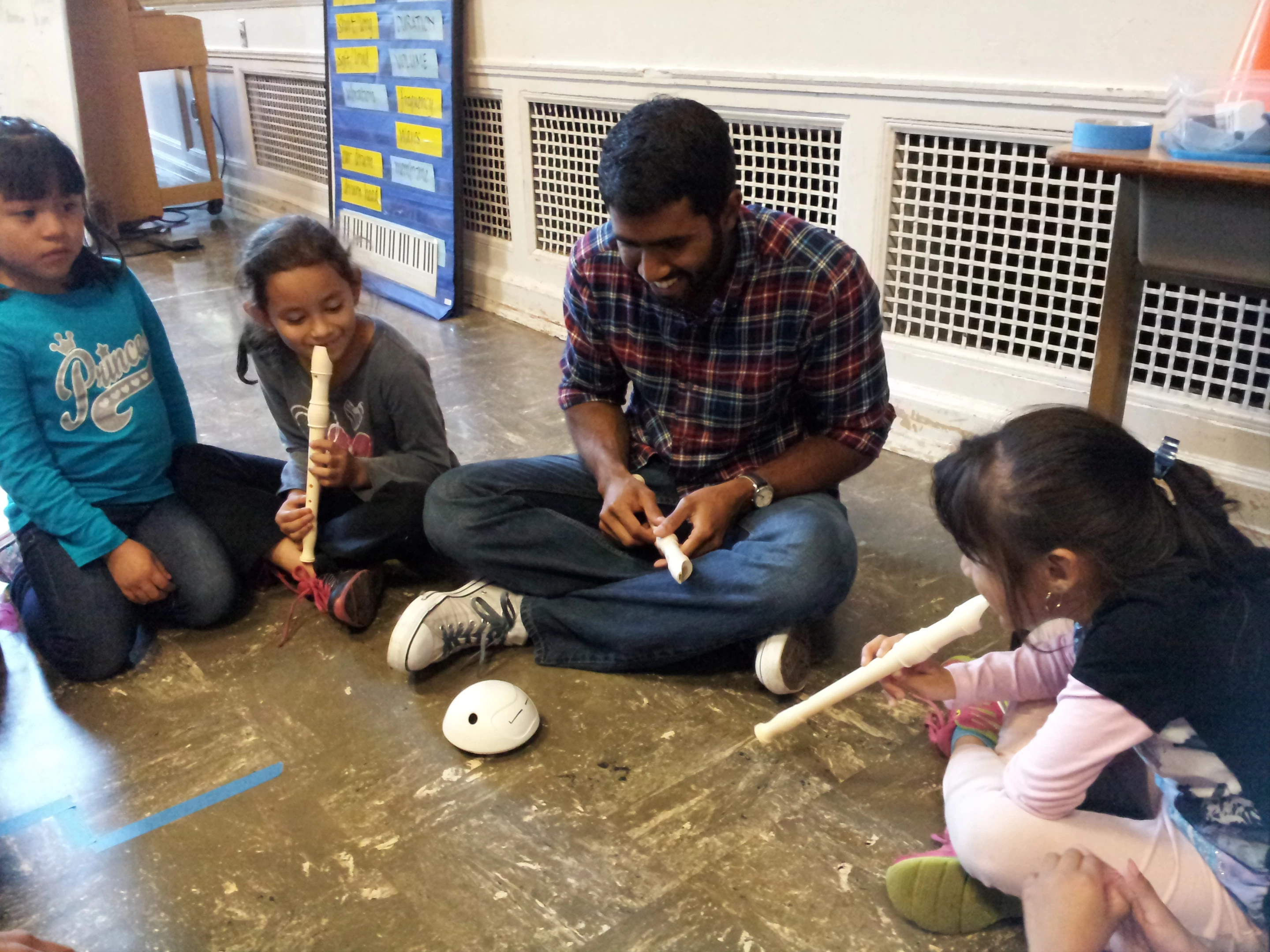Building and playing with robots can be a whole lot of fun for kids of all ages, but making the robot do your bidding by creating lines and lines of code can be a bit, well, dull. Wigl takes a different approach. Rather than generate commands using a smartphone or computer, young programmers just need to pick up an instrument and hit the right note. The little bot then responds with bustin' moves, flashing lights or special dances.
Electrical engineer Vivek Mano built the first Wigl prototype in July 2013 and then started testing the concept at a school in Portland, Oregon.
"I want to effectively alter the way kids approach learning," Mano told Gizmag. "Seeing a child's eyes light up when they realize that sound that they're making (via musical instrument) can control something is powerful. It's not something they're used to. That gets them curious as to what else is possible and (hopefully) will lead them down that rabbit hole."
When Wigl's built-in microphone registers a recognized note in auto mode, the bot responds by lighting its LEDs and moving in a specific way thanks to the battery-powered electric motors driving its wheels. The note A played on a recorder or flute, for example, might move it forward, a C could result in a right turn or a D might put it in reverse. Mano says that Wigl can register notes from any instrument that produces musical notes, though it's unable to "distinguish individual notes from percussive instruments, such as drums."
In programming mode, the bot sits still and listens to the notes being played. The toots or twangs instruct Wigl on what actions to perform when the "enter" note is played. Kids learn the basics of programming and problem solving by working out how to instruct Wigl to make its way around an obstacle course or reverse into a parking space. Different notes result in different actions, and planning the order of those notes makes Wigl move in specific ways. The system also encourages robot-controlling musicians to play better. If Wigl hears a bum note, it doesn't perform as expected or doesn't move at all.

After 18 months of hands-on time with kids in schools, museums and exhibitions, Mano took his idea to crowdfunding portal Indiegogo in November last year. Unfortunately, the project failed to reach the US$10,000 target at campaign close. Development, however, continues.
Mano currently has fully-functional Wigl alpha units that are used for demos, presentations and events. He told us that he's working with an industrial designer on the bot's outer plastic housing and "recently won TiE Pitchfest and is using that momentum to start exploring funding opportunities."
He's also working on creating content for schools to complement the robot in a 6 - 8 week course, geared towards alternative elementary education establishments like Waldorf and Montessori.
"In the immediate future, I hope to raise $50,000 to get Wigl to production (plastics tooling, electronics, etc)," he told us. "With this seed money, I can better approach schools with technology programs that are interested in more creative approaches to learning. We have two paths ahead of us:
a) Sell Wigl as a stand-alone, pre-built robot. This is geared more towards the home consumer and music schools and would be closed-source.
b) Sell Wigl as a kit to be built, along with a curriculum that ties in many different subjects. This would involve open-sourcing the hardware and software, and would most likely incorporate the Arduino bootloader for ease. Arduino code is very similar to C code (almost interchangeable at some points) and is a highly marketable skill to learn."
More information on the project is available via the source link below, and you can see Wigl trying its best to dance to bagpipe music in the video below.
Source: Wigl













